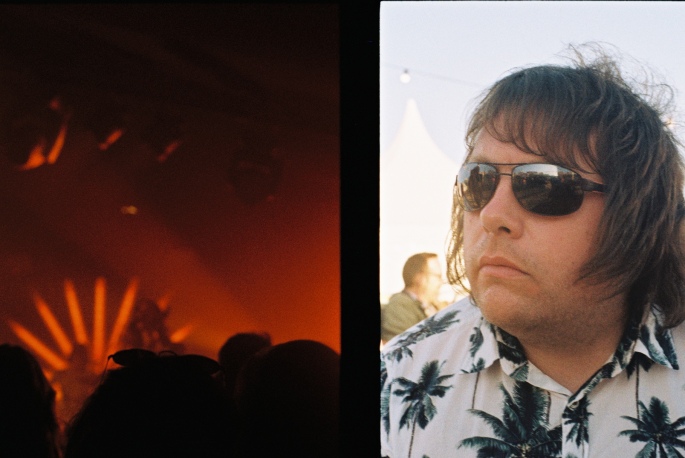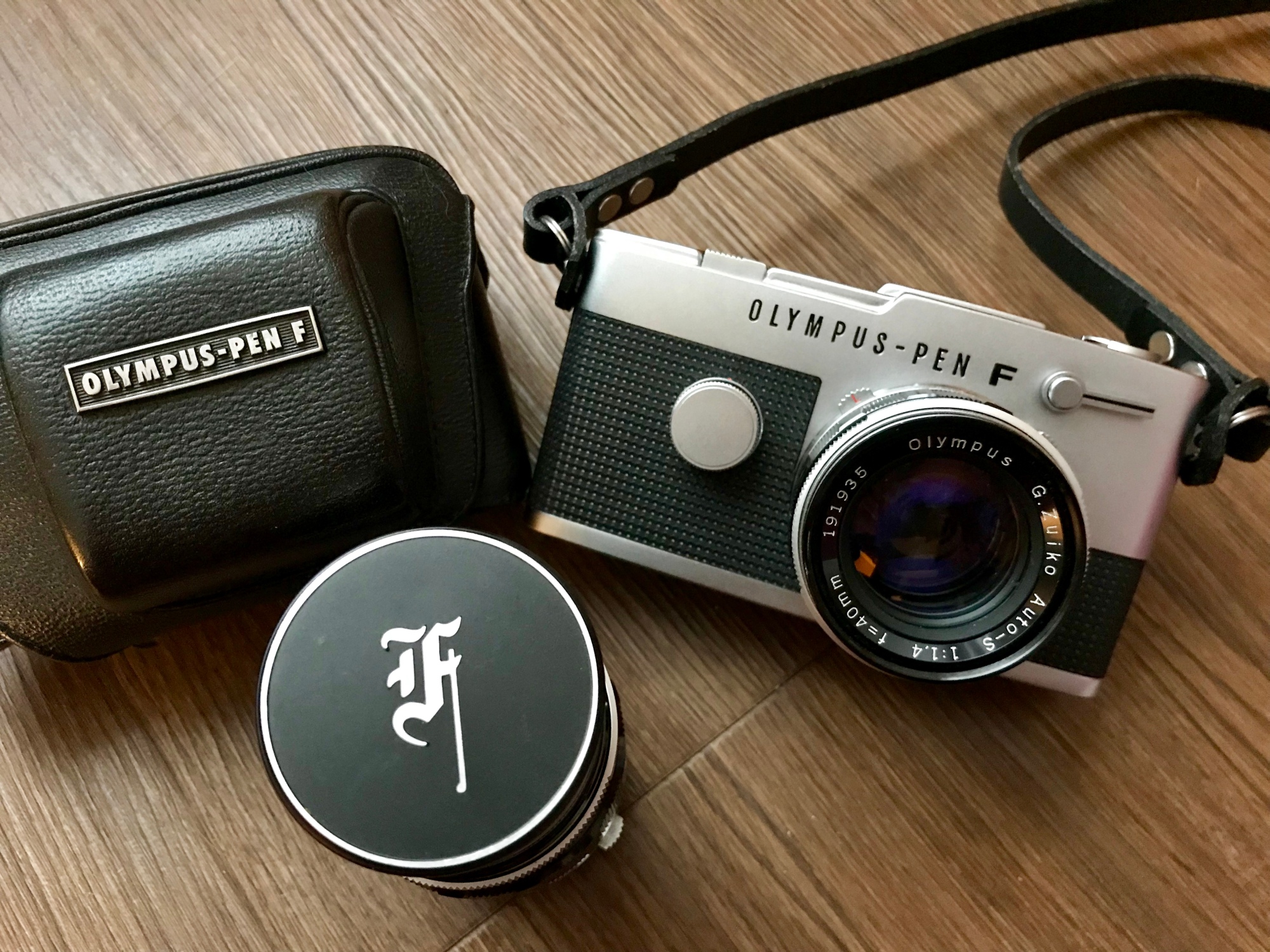I first discovered this camera when I was reading the Tokyo Camera Style book by John Sypal.
I initially fell in love with the design of the camera but was also very intrigued when I discovered on the internet that it’s a half frame camera.
Half frame camera’s were popular before I was born so I wasn’t sure what this type of camera was.
After further research I discovered that a half frame camera uses twice as many frames at half the normal frame width on a 35mm negative to an ordinary film camera. For instance, if I loaded this camera with a 36 exposure film, I would be able to get 72 images instead of 36. This was because developing pictures back in the 1950s/60s was quite expensive so this was a great way to get twice as many photos developed for the same price. As development of photos got cheaper in subsequent years, the half frame camera became less popular.
I found this highly fascinating and immediately knew I would love to add a half frame camera to my collection.
After further research I found lots of half frame cameras had been released into the market over the years. Initially Olympus had released the Olympus Pen F camera and some of these camera’s have a cool F design on the front of the camera (like the lens cap design in my picture) but these didn’t include a self timer. Olympus also released other types of half frame camera’s as well as these Pen SLR camera’s.
I also discovered that Canon released a half frame version too. In the end I decided that the Olympus Pen FT was the camera I really wanted to own and use. The main reason being that it had a self-timer.
Unfortunately my local second hand camera shops didn’t have any in stock and although they’re not rare, they are not as readily available as perhaps an Olympus Trip 35 and they also come at a higher price tag.
I’d already decided that I was willing to pay more for a nicer condition one as I prefer to have my cameras in great condition, especially if I’m going to use them regularly.
Initially I found that most of these cameras are available for sale on eBay but are mainly for sale in Japan. Ideally I wanted to purchase mine from a UK seller so knew I had to be patient as they are few and far between.
After several months of searching and checking in with my local second hand camera shops to see if they miraculously had one come into their shop I finally found the one I wanted on Etsy.
I bought it from a gentleman in Scotland who is a professional photographer and refurbishes vintage camera’s as a hobby. He mainly finds his vintage camera’s in charity shops and he told me a lot of them are a complete write off and beyond repair but every now and again, he’ll find a camera in amazing condition or which he’s able to easily repair and cosmetically it’s in great condition.
This camera was one he had discovered in immaculate condition and only needed some slight refurbishment. He had personally owned the camera for over a year but found due to other photography commitments, it wasn’t getting the use it truly deserved so reluctantly he decided to sell it.
The camera came with it’s original leather case and the Zuiko 40mm f1.4 lens. The Olympus Pen FT camera was in production from 1966 to 1972 and what I loved even more was that the camera came with the original receipt which showed that it was purchased on 11th June 1972 and written on the receipt was the serial number of the camera and the serial number of the lens which matched my camera and lens.
The shutter speeds on this camera are B/1 to 1/500 and it has a unique rotating disc design that syncs with the flash at all speeds. The aperture is from f1.4 to f16. It has a light meter reading in the viewfinder which is numbered with a needle rather than a needle which you aim to point to the centre which I found unusual but was easy to understand. Basically the needle in the viewfinder will point to a number (ranging from 0 – 7) and you’ll match the number on front of the lens to make sure you get the right exposure. You can adjust the shutter speed to change this number if you need to.
I certainly wasn’t disappointed when I received and started using this camera. It’s an SLR and has interchangeable lenses. I also loved the half frame viewfinder and how I had to think a bit differently when shooting an image in comparison to taking pictures with a normal camera.
It’s a much smaller camera in comparison to my Pentax K1000 so I can literally pop it into my handbag which is great.
Here are some photos I’ve taken using the 40mm lens. I took the film for development to my local film development shop called Colourstream in Brighton. They told me they could only develop the film on a normal frame width which means that there would be two photos on the frame with a black border. They also informed me that the exposure would be a compromise between the two images rather than each individual one.
I was keen to get my first film developed asap so was happy for them to develop the film this way and was interested to see how two photos would turn out printed together.
Here are some of the results which I shot on a Kodak Colour Plus 200 (36 exposure) film:








I also experimented using the self-timer which was great fun. However, one of my friends who is a photographer and has a lot of knowledge on vintage camera’s since informed me that I was taking a great risk in using the self-timer option as vintage camera’s are notorious for having the mechanics of the camera break on you if you use this because they are old and fragile. I therefore haven’t risked using it anymore but below is an image on the left where I used the self-timer:



looks like a fun camera. I imagine you could create some interesting diptychs with it 🙂
LikeLiked by 1 person
Definitely 😊 I’ve got lots of plans for this camera which I’ll continue to update on my blog as I get more pictures developed 📷
LikeLiked by 1 person
The half frame cameras are totaly new to me. They are not popular here in Hungary( maybe because we can only get cameras from the soviet union 😀 ). The size is good, I mean this camera is really cute, but 72 frames are too much for me.
Now I use a Fed-2 rangefinder, it is smaller than an SLR camera, but not that small unfortunately.
My other small camera is a Smena Symbol, what is really a pocket size camera, ok, not pocket size, but it can fill the useless empty space in my bag. But the focusing is just a guess.
My TLR Weltaflex has a broken self timer, I disassembled it, tried to repair it, but parts are already broken, or bent, I think because a previous wrong assembly, so I just did not put the parts of the selftimer back to the camera, so it can not make a failure in other parts of the shutter.
LikeLiked by 1 person
72 frames is quite a lot. You can buy 35mm films with only 24 frames which means that you would only have 48 frames to use in the half frame camera 👍
LikeLiked by 2 people
Hi may i know where you got the camera?
LikeLiked by 1 person
Of course 😊 I bought it from a seller on http://www.etsy.com who is a photographer and repairs vintage film cameras in his spare time 👍
LikeLike
Do you use the f1.4 aperture on this lens? I’m debating between an FT with a 38mm f1.8 and 40mm F1.4. The 38mm bundle is $100 cheaper…
LikeLiked by 1 person
Apologies for the delay in responding Dora, I’ve been away on holiday. I don’t really use the F1.4 aperture a great deal so the 38mm lens would be just as fine in my opinion.
LikeLike
Would you recommend spending more on eBay for this camera with the 40mm f1.4 lens? I’m deciding between this and the bundle with the 38mm f1.4 lens, which is $100 cheaper.
LikeLiked by 1 person
I would perhaps go with the cheaper bundle myself as my friend has the 38mm lens and I’ve personally not seen much difference in the photos we take. Once again, apologies I’ve not given this advice to you sooner since I was away and had limited access to the Internet. Did you get one in the end?
LikeLike
Do you use the lightmeter built? I have my pen ft but the photos are not great as yours, so im thinking maybe theres something wrong in my lightmeter
LikeLiked by 1 person
Yes I do. I use a WeinCell 1.35v mercury camera battery PX625 in my camera if that’s any help? 👍
LikeLike
That brought back memories. My brother gave me an Olympus Pen that he bought in Vietnam.
LikeLiked by 1 person
What do I do if I don’t have the battery for my camera, so the light meter doesn’t work? how to know what to do then with the aperture?
LikeLiked by 1 person
You can still get modern day batteries for that camera. Funnily enough, I just had to buy one for mine as I realised the battery was no longer working mid-taking some photos. It’s always good to go by the Sunny 16 rule. If shooting in the day time, never go any lower than a shutter speed of 1/125 otherwise images can end up blurry if hand held without a tripod. Depending on what ISO film you have in the camera, you can shoot at shutter speed of 1/125 or 1/250 with an aperture of f/11 or f/8 if a cloudy day. I would highly recommend getting a battery if you can, they cost less than £5 and you will get to familiar with what settings work best with what light, should the battery fail again. I hope this helps but if you need advice on the battery I use for mine, let me know 👍
LikeLike
For a more accurate reading of the exposure meter ,I used to use a Kodak grey card to read the exposure.
I also processed the film usually Ilford HP3 in Neofin Blue in a Patterson Tank and spiral reel.I used to be a bit OCD about the filtering of the solutions and temperature control.Using a venturi pump and buchner funnel and a modified aquarium healter in winter to bring up the temp.Also a Durst enlarger with a Nikkor lens.
I was thus able to produce excellent 8×10 enlagements.
LikeLiked by 1 person
Thanks for sharing Marcus 🤗
LikeLike